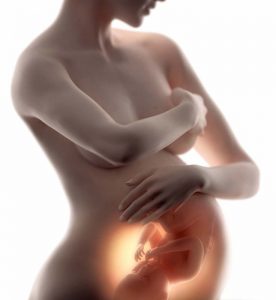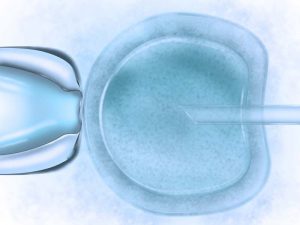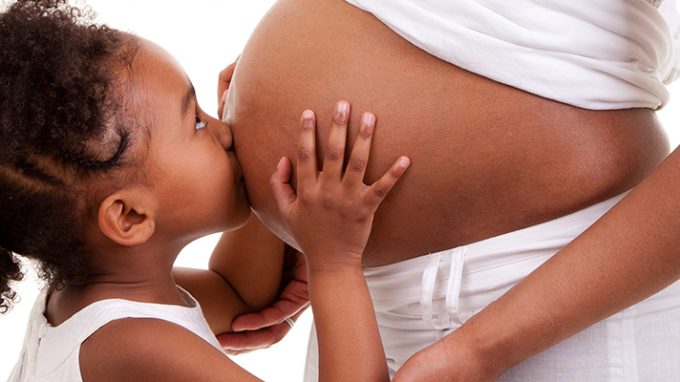When a couple decides to start a family, they often imagine having more than one child. Unfortunately, almost three million American women have difficulty having a second child. By understanding the secondary fertility complications that can arise and recognizing the potential treatments, a couple is able to start a realistic fertility plan.
Primary Causes of Infertility in Women
 The inability to have a second child, or secondary infertility, is often related to the health of the mother. Even if the first child was born without any complications, a mother’s physical body changes throughout the pregnancy and after giving birth. Aging is a primary factor that impacts the ability to conceive a child. Over time, the quantity and quality of eggs in a woman’s reproductive system will change. As women age, the body might not release eggs every month or the quality of the eggs result in an early miscarriage.
The inability to have a second child, or secondary infertility, is often related to the health of the mother. Even if the first child was born without any complications, a mother’s physical body changes throughout the pregnancy and after giving birth. Aging is a primary factor that impacts the ability to conceive a child. Over time, the quantity and quality of eggs in a woman’s reproductive system will change. As women age, the body might not release eggs every month or the quality of the eggs result in an early miscarriage.When aging is not the primary reason for infertility, it is possible that the structure of the body has changed. Internal structures like the fallopian tubes play an essential role in fertility. When an infection, previous pregnancy or a surgical procedure cause any changes to the structure of the reproductive system, it is possible that the eggs are not traveling properly. As a result, a woman does not get pregnant. Physical health and well-being is also important for conception. For example, if a woman gains weight, then the additional weight impacts the body’s natural functions. Smoking and other unhealthy habits also impact fertility, especially if the habit is persistent.
Male Infertility
Even though several factors impact the health of the mother, secondary infertility is not always related to a woman’s health. In some cases, the problem stems from changes in sperm quality or quantity from the father. Sperm quality and quantity changes as men age or when they are unhealthy. Medications can also change the quality of sperm and make it more difficult to get pregnant. Semen tests are run during infertility testing to eliminate the possibility of complications from the father’s side.
Fertility Diet and Tips
 Secondary fertility starts with identifying the potential causes of infertility and making appropriate changes to personal habits. Since excessive weight and poor health impact fertility, following a fertility diet helps improve the possibility of conceiving. Eating more vegetable proteins rather than animal proteins and opting for high-fat foods like whole milk rather than the low-fat alternatives is recommended. Taking iron or folic acid supplements also helps with infertility that is related to ovulation.
Secondary fertility starts with identifying the potential causes of infertility and making appropriate changes to personal habits. Since excessive weight and poor health impact fertility, following a fertility diet helps improve the possibility of conceiving. Eating more vegetable proteins rather than animal proteins and opting for high-fat foods like whole milk rather than the low-fat alternatives is recommended. Taking iron or folic acid supplements also helps with infertility that is related to ovulation.Tips for secondary fertility must also consider the possibility of a miscarriage. In many cases, the problem does not stem from ovulation, but rather from complications with maintaining a pregnancy. Follow a medical doctor’s advice if there is a risk of miscarriage and take appropriate supplements for good health. Whole grains, fruits, vegetables and fish that is high in omega-3 fatty acids like salmon is recommended. Even though dietary changes are essential for secondary fertility, a couple should also exercise regularly and reduce their current weight to avoid complications. Regular exercise helps reduce or maintain a healthy weight and ensures that the body has a healthy circulatory system. As a result, the body is prepared to support the additional needs of an unborn child.
Medical Treatments
 When dietary changes and a healthy lifestyle do not help, consider medical treatments. Medical treatments for secondary fertility depend on the cause of the infertility and the specific comfort levels of the individual. Medications that increase the number of available eggs to fertilize are an appropriate option if a woman is not producing enough eggs or has any complications associated with the eggs that are available. Men may also take medications to help increase sperm count or may be recommended an alternative medication for health concerns if current medications are causing problems with sperm quality or quantity.
When dietary changes and a healthy lifestyle do not help, consider medical treatments. Medical treatments for secondary fertility depend on the cause of the infertility and the specific comfort levels of the individual. Medications that increase the number of available eggs to fertilize are an appropriate option if a woman is not producing enough eggs or has any complications associated with the eggs that are available. Men may also take medications to help increase sperm count or may be recommended an alternative medication for health concerns if current medications are causing problems with sperm quality or quantity.When the problem stems from fertilization, a couple has several options to help increase the possibility of pregnancy. Fertilization can take place in vitro or through intrauterine insemination if a couple is not able to conceive without medical assistance. In particular, in vitro fertilization helps when structural complications arise and prevent a woman from conceiving a child. The final option is obtaining a donated egg. Since the cause of secondary infertility is often related to diminished ovarian reserves, an egg that is donated from another individual provides an opportunity to get pregnant. Conceiving children is not always easy, even if a couple has conceived in the past. Over time, the body changes and sometimes the alterations will cause secondary infertility. Fortunately, medical professionals have several options that help with secondary fertility and the process of conceiving a child in different situations.





